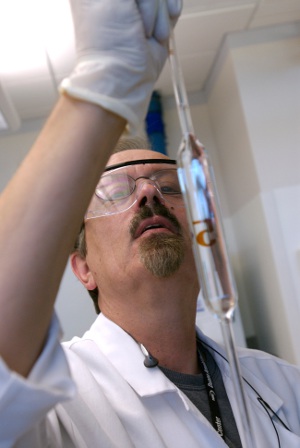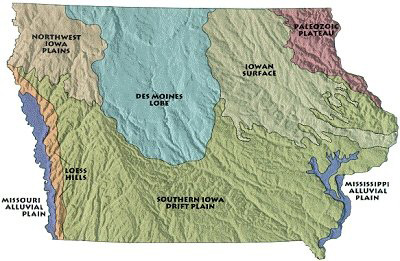
 |
|
People may know Cerro Gordo County, Iowa, for the natural beauty of Clear Lake or the rock-and-roll history of the Surf Ballroom. It is known in the environmental community, however, for uniting one federal organization, three state agencies, a university center, a professor and a small drilling business on behalf of local citizens. Photo courtesy of Donna Eckard The project began in 2008 with a three-year study led by the University of Iowa Center for Health Effects of Environmental Contamination (CHEEC). The Hygienic Laboratory partnered in this work that examined 475 private wells in 91 of Iowa's 99 counties. A key finding was detection of arsenic in well water from 31 of the 99 counties studied, with Cerro Gordo County topping the list. The persistent arsenic was measured well above 10 parts per billion, which is the allowable level for public water supplies. In a follow-up study by the Cerro Gordo County Department of Health, arsenic was detected in 70 percent of the samples; 38 percent of those measured above 10 parts per billion. The county also learned that it has the highest arsenic concentration level on record in the state of Iowa at 540 parts per billion. Levels as low as 100 parts per billion may cause health issues such as nervous system and skin problems, high blood pressure, and reduced intelligence in children, according to the Cerro Gordo County Department of Public Health. Arsenic enters drinking water either from natural deposits in the soil and bedrock or from agricultural and industrial uses. Although arsenic is a naturally occurring mineral, it has been linked to certain cancers. Nearly 15 percent of the 44,151 county residents use water from private wells as their primary source of drinking water, including Jack and Sandi Davis.  "As citizens of Cerro Gordo County, my wife and I had firsthand experience with arsenic in our water supply," Davis said. "In 2004, the Cerro Gordo County Department of Public Health sampled our water for routine contaminants. As part of this assessment, we learned that our well had elevated arsenic concentrations. We contacted the Cerro Gordo County Department of Public Health to survey the situation more and learned that several neighbors also had arsenic in their water. "Following a lengthy assessment, evaluation and diagnosis, it was determined that all our wells needed replacement. A shared well was drilled for the well replacement in 2006 and included five properties. Today the shared well remains arsenic free. Mrs. Davis suffered because of arsenic poisoning from our well and still today has some residual nerve damage from it." The Cerro Gordo County Department of Public Health received a grant from the CDC to determine why arsenic is found in the county's well water. In 2010, it began a five-year study to measure arsenic in water from private residential wells like that of the Davis family. Doug Schnoebelen of UI Civil and Environmental Engineering came onboard along with the Iowa Geological Survey and the Iowa Department of Natural Resources. The Hygienic Laboratory is testing the water from the wells for levels of arsenic, metals and other laboratory parameters such as organic carbon, turbidity and alkalinity. The other partners will analyze the water for pH, temperature, flow rate and hardness. Water samples will be taken from at least 50 wells in the county twice a year for three consecutive years. The location of the wells and their depths will be mapped so that different aquifers can be compared. Shawver Well Company is conducting the drilling. In addition to testing the water, the Hygienic Laboratory is testing soil, sand and rock from core samples collected when new wells are drilled. Cerro Gordo County Board of Health enacted an ordinance in 2007 requiring arsenic testing for newly constructed and reconstructed wells in the county. "Cerro Gordo is in the Des Moines Lobe, which is known to have geological deposits of arsenic," said Michael Wichman, Ph.D., associate director of Environmental Health Programs at the Hygienic Lab. The Des Moines Lobe is a geological area in central Iowa formed by a glacier 12,000 years ago.  Wichman, with Lorelei Kurimski, program consultant, and Don Simmons, Ph.D., environmental program manager, is coordinating the Hygienic Lab's portion of the project. At least 50 private wells are expected to be tested two times each over a three-year period. "What we hope to come out of this is a model to estimate the risk of arsenic exposure in groundwater," Wichman said. "If that model holds true, it could be applied nationwide. So, it is a worthwhile project." |

